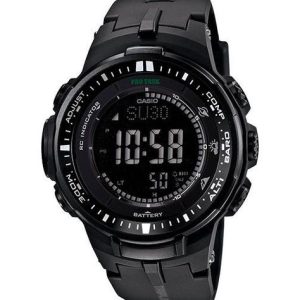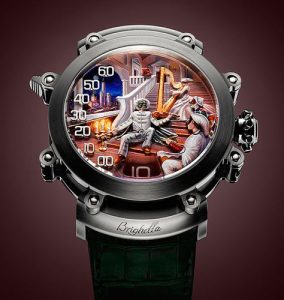Uncategorized
A Deep Dive Into the World of Tourbillon Watches
When it comes to horology, few terms evoke as much admiration and intrigue as the tourbillon. Known for its exquisite craftsmanship, complex design, and stunning visual appeal, the tourbillon is often considered the pinnacle of watchmaking. However, beyond its luxurious aura lies a fascinating history, intricate mechanics, and a distinct purpose. Whether you’re a seasoned watch collector or a curious beginner, understanding the tourbillon is essential to truly appreciating the artistry and engineering of fine timepieces.
In this article, we’ll take a deep dive into the world of tourbillon watches, exploring their history, mechanics, significance, and why they are revered in the world of luxury horology.
What is a Tourbillon?
At its core, a tourbillon is a type of mechanical complication in a watch that is designed to counteract the effects of gravity on the accuracy of the timepiece. The name “tourbillon” comes from the French word for “whirlwind,” and it refers to the rotating cage in which the escapement and balance wheel are mounted. This rotating mechanism helps to average out positional errors caused by gravity when the watch is in a particular orientation, such as when the wearer is sitting, standing, or lying down.
Key Features of a Tourbillon:
- Rotating cage: The escapement and balance wheel are housed within a cage that rotates, usually once per minute or once per hour, depending on the design.
- Mechanical innovation: Tourbillons are usually found in manual or automatic mechanical watches.
- Purpose: Initially designed to improve accuracy by compensating for the gravitational effects on the escapement.
The History of the Tourbillon
The tourbillon was invented by the legendary Swiss watchmaker Abraham-Louis Breguet in 1795, with the first practical application appearing in 1801. During the late 18th and early 19th centuries, watches were typically pocket watches that were often kept in a fixed position (such as in a pocket) or stored on a flat surface. This caused the timekeeping to be influenced by gravity, as the escapement and balance wheel would often operate less accurately depending on their position.
Breguet’s invention was revolutionary because it provided a mechanical solution to this problem. By placing the escapement and balance wheel within a rotating cage, the tourbillon effectively nullified positional errors by averaging them out over time. Breguet’s genius lay in the fact that he not only solved a mechanical problem but also created an intricate design that would later become a symbol of high-end horology.
However, in modern times, the tourbillon’s original purpose has become somewhat obsolete with the advancement of technology, particularly in the development of more accurate mechanical movements and the introduction of quartz watches. Nevertheless, the tourbillon remains a hallmark of craftsmanship, complexity, and luxury, highly sought after by collectors.
How Does a Tourbillon Work?

The mechanics behind a tourbillon are fascinating, and while the complication’s purpose was once practical, it is now primarily an aesthetic and technical showcase of a watchmaker’s skill. Let’s break down how it works:
- Escapement and Balance Wheel: The escapement regulates the release of energy from the mainspring, while the balance wheel oscillates at a constant rate, keeping time. These two components are crucial for the movement’s accuracy.
- Rotating Cage: The escapement and balance wheel are housed within a small cage that rotates around its axis. The cage’s rotation ensures that the escapement and balance wheel are subjected to all positions equally, negating the effect of gravity when the watch is tilted in any direction.
- Constant Rotation: In a typical tourbillon, the cage rotates once per minute, but some higher-end watches feature a bi-axial or multi-axial tourbillon, where the cage rotates on multiple axes for even more complexity and refinement. This rotation further enhances the aesthetics of the watch, with the mesmerizing motion of the balance wheel and escapement within the cage becoming a visual spectacle.
Types of Tourbillons
While all tourbillons share the same basic mechanism, there are several variations that differ in complexity and design. Some of the most notable types of tourbillons include:
1. Single-Axis Tourbillon
This is the traditional and most common type of tourbillon. The escapement and balance wheel rotate along a single axis, typically completing one full rotation per minute. The simplicity and elegance of this design make it a classic choice for many high-end watchmakers.
Popular Models:
- Breguet Classique 5335: A modern take on Breguet’s original invention, featuring a single-axis tourbillon.
- Jaeger-LeCoultre Master Grande Tradition: Known for its precision and luxurious design.
2. Bi-Axial Tourbillon
As the name suggests, the bi-axial tourbillon features two axes of rotation. The cage rotates both vertically and horizontally, offering a more dynamic movement. This type of tourbillon provides additional mechanical complexity and greater visual interest, as the multiple axes create a more dramatic and fluid motion.
Popular Models:
- Richard Mille RM 027: A lightweight and innovative design with a bi-axial tourbillon.
- Girard-Perregaux Tri-Axial Tourbillon: A highly sophisticated model with three axes of rotation.
3. Multi-Axial Tourbillon
The multi-axial tourbillon goes even further by rotating on multiple axes, typically three or more, for an even more intricate and visually stunning movement. These tourbillons are incredibly complex and are considered a significant feat in the world of watchmaking.
Popular Models:
- Greubel Forsey Quadruple Tourbillon: One of the most complicated tourbillons, featuring four rotating cages.
- Jacob & Co. Twin-Turbo Furious: A multi-axis tourbillon with two rotating cages for a mesmerizing effect.
Why Are Tourbillons So Expensive?
Tourbillons are among the most expensive complications in watchmaking, and there are several reasons why these watches come with such a hefty price tag:
- Complexity of Construction: Crafting a tourbillon requires extraordinary skill and precision. The intricate components must be made to exacting standards, and the assembly process is labor-intensive. Even a minor mistake in the construction of the movement can lead to major accuracy issues.
- Time-Consuming Manufacturing: The process of designing, machining, and assembling a tourbillon takes time—often hundreds of hours—depending on the complexity of the movement. This level of craftsmanship adds to the cost of the watch.
- Limited Production: Many tourbillon watches are produced in limited quantities, and some of the most prestigious brands manufacture only a handful of tourbillons each year. The rarity of these watches increases their desirability among collectors.
- Aesthetic Appeal: The mesmerizing rotation of the tourbillon inside the case adds a captivating visual element. This makes tourbillons not just timekeeping instruments but also works of art, which contribute to their luxury status.
Tourbillon Watches Today: Still Relevant?

In the 21st century, the primary purpose of the tourbillon—counteracting gravity—has become less critical with the advancement of precision movements and technology. However, the tourbillon remains a highly coveted feature in luxury watches for several reasons:
- Craftsmanship: The creation of a tourbillon watch is a demonstration of exceptional horological expertise. It’s a symbol of a watchmaker’s skill and dedication to the art of watchmaking.
- Visual Impact: Tourbillons add a dynamic and mesmerizing element to a watch, transforming it from a simple timepiece into an engineering marvel.
- Exclusivity: Owning a tourbillon is a mark of distinction. Because of their rarity, they are often sought after by serious collectors and watch connoisseurs.
Conclusion
The tourbillon is one of the most fascinating and prestigious complications in the world of horology. Although its original purpose may no longer be as essential in modern times, the tourbillon remains a symbol of mechanical ingenuity, artistic beauty, and horological history. Whether you’re a seasoned collector or a curious enthusiast, exploring the world of tourbillon watches offers an incredible glimpse into the craftsmanship and passion that goes into creating the finest timepieces.

